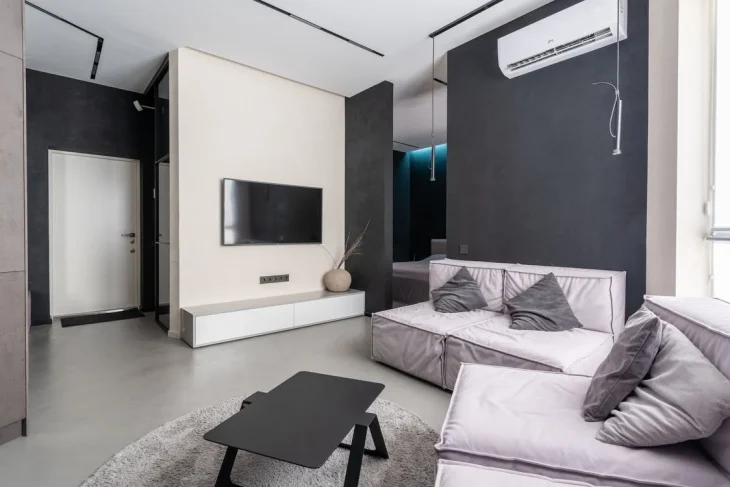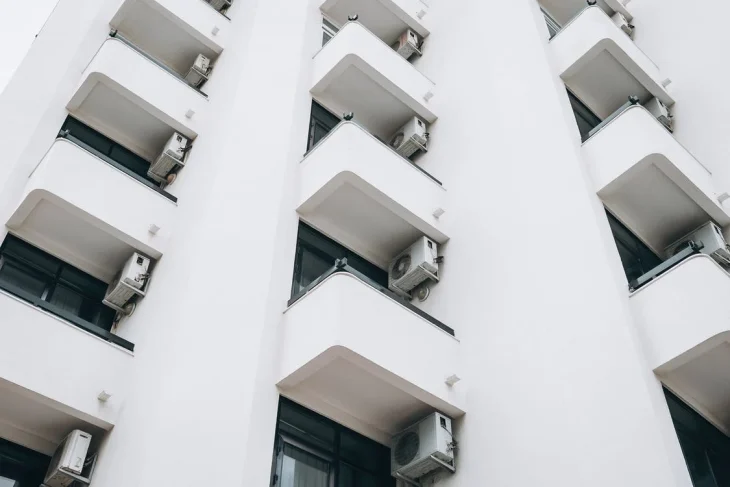
About three-quarters of homes in the US have a cooling system. The AC units in the country consume approximately six percent of all electricity produced. Energy bills cost homeowners about 29 billion dollars annually.
Modern cooling systems provide comfortable chilled air to enclosed spaces, using the least energy possible. While these energy-efficient units come in various sizes and shapes, they operate on the same basic principles. A standard AC has three main components: a condenser coil, compressor, and evaporator coil. Ensure your cooling system is in the best condition by enlisting an expert for maintenance.
An AC has the same essential component and operating principles as your refrigerator. Besides energy efficiency, though critical, there are other factors to consider when shopping for a cooling system. For example, the size of your room determines the AC size you need. Some ACs allow you to set predefined variable temperatures, increasing cooling efficiency while reducing energy use. Also, check the cooling speed of the air conditioner.
Are you considering an AC upgrade, planning to add another, or wish to have one for the first time? Keep reading to see the most efficient cooling system for your home.
Central Air Conditioners
This is the most popular and known home cooling option. The central air conditioner distributes the heat elsewhere through the cycling refrigerant, which cools your entire house once. As the name suggests, the air cools at a central location before it is transported everywhere through the ducts.
Central cooling systems were expensive as they cooled the entire home. However, there are improved units that are highly efficient.
Some benefit of having a central air conditioning system is the unit’s quiet operation. The compressor bearing unit is outside the home, hence the indoor noise level is extremely low compared to the freestanding ones.
Room Air Conditioners
Unlike central AC systems installed to cool the entire premise, even spaces not in use, these cooling systems cool each room individually. As a result, you will save energy bills considerably. This option offers a wide variety of options which include:
– Window AC
– Ductless Mini-Split AC
– Window AC
– Through-the-Wall AC
– Portable AC
– Packaged Terminal AC (Also known as PTACs)
– Vertical Package AC
Room air conditioners provide the cooling for the individualized spaces, only where you need it. You may install or use it in the upper rooms as most of the basement is always cold, and consider using the heating systems when you need the area warm.
Depending on your cooling needs, you can purchase multiple units for the rooms or invest in a portable AC. The significant advantage of room air conditioners is that you will not need to run units in unoccupied spaces of your home.
Evaporative Coolers
As old school as it sounds, evaporative coolers still feature among the most efficient cooling systems as they provide cheaper options that cool your home once. In low-humid areas, water evaporating into the air provides an energy-efficient and natural means of cooling. This is the principle that the evaporative coolers, also known as swamp coolers, use.
The outdoor air passes over water-saturated pads. This causes the pad water to evaporate, reducing the temperature by 15 – 40 degrees Fahrenheit before directing it into the home.
Windows are partially open when operating evaporative coolers to allow the warm indoor air replacement by fresh air escape. Evaporative coolers provide a constant stream of fresh air into your indoor space, unlike the central air system, which recirculates the same air.
While they are cheaper to install and use less energy than the popular central air conditioners, the evaporative coolers require more frequent maintenance. Also, they work best for areas with low humidity.

Thermally Driven Coolers
Solar energy is becoming popular for many reasons. Today, more people are embracing solar-powered thermally driven coolers to combat climate change and save on energy bills considerably.
Thermally driven air conditioners were initially perfect for remote locations as they do not depend on the primary grid energy. Today, the concept is gaining favor with developed area residents seeking to cut carbon footprints or reduce energy expenses. There are impressive developments in thermal-driven ACs manufacturing with better models coming into the market.
Motion Activated Coolers
The motion-activated coolers are sophisticated, innovative units that use sensors and thermostats to function well. Motion sensors, combined with mini split, allow the air conditioner to adjust the temperatures of individual rooms or specific zones.
Motion-activated coolers will make your sitting room cooler when you host visitors in the living room and less cooled when they leave. The system uses electronic tracking to establish the location and number of occupants in a building and then adjusts the thermostat accordingly. The technology uses sensors and smart thermostats to create an uninterrupted experience, keeping the AC on, even with minimal motion, when everyone is asleep.
Ice-Powered Coolers
Imagine setting up a fan to blow on a bunch of ice, distributing the cool air around the room. The ice-powered cooler is a more sophisticated unit based on the same concept. With ice-powered AC units, water freezes overnight using electricity containing thermal energy inside. This provides power to cool your space through the day’s hot hours. It is a simple way of using ice and the sun to cool your house.
Finally, there are many cooling systems in the market. You must identify your needs and what will work best to get the most efficient AC for your space, as blindly shopping for AC is confusing. This is your ultimate guide to the most efficient cooling system on the market. A combination of energy-efficient windows, proper insulation, shading, ventilation, and daylighting will use minimum energy to power your home. It will help to familiarize yourself with the heating and cooling principle before choosing a heating system. While at it, consider the SEER and reviews of the particular units of your choice.



